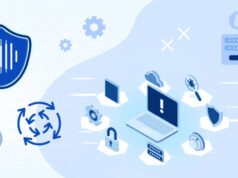
The threats faced by the modern world are constantly increasing. Especially on the Internet – although today we are able to handle many things via the Internet without leaving home, we are still exposed to various types of cybercrime.
Their intensity is related to the pandemic, the transfer of the activities of many companies to the Internet, as well as the transition to remote work of many employees around the world.
Cybersecurity Is More Important than Ever
According to the report “The State of Cyber Resilience” prepared by Microsoft and Marsh, almost 75% of organizations around the world experienced at least one cyberattack last year.
At the same time, only 41% of them involve legal, corporate planning, finance, operations, or supply chain management departments in developing cyber risk plans. There is no one-size-fits-all solution to the cyber threats that organizations around the world face today, but awareness and action can increase their resilience and security in the future.
How Much Do Companies Lose After a Hacker Attack?
For companies, a cyberattack is not only a loss of valuable data but also money. According to the IBM Security report, companies lose on average over 4 million dollars a year due to hacker attacks.

The average cost of a security breach among the surveyed organizations was 4.35 million dollars. This is a record level and an increase of almost 13 percent compared to the survey two years ago.
Researchers also point to the relationship between losses resulting from cyberattacks and the increase in the prices of products and services. In the analyzed sample, as many as 6 out of 10 (60%) entities raised prices.
Cybersecurity also turned out to be a difficult element of IT to manage during the pandemic. Insufficient security of networks and equipment was a foreseeable consequence of the race to remain operational at the beginning of the lockdown when the priority was to keep the business running
Awareness of Employees in Building Cybersecurity
Every employee should be involved and have up-to-date knowledge of cybersecurity. Many of the specialists directly concerned, such as risk managers and finance specialists, are still not directly engaged in the management of cyber incidents.
Although cyber risk management in the company is focused on tools and plans, in fact, even the best security mechanism and actions will probably not live up to their potential if there is no effective communication throughout the enterprise.
Risk assessment, possibilities of its transfer, and response to an incident or data security breach are areas that shape the cybersecurity culture and build the organization’s resilience to potential threats.
Can Threats on The Internet Be Avoided?

Unfortunately, we can never be sure of this, but by taking appropriate steps, we are able to limit their number. What fraud protective practices can we use?
There is a conclusion to be drawn from the analysis of the data contained in the IBM Security report. Specialists from dsstream.com say that companies and organizations that used artificial intelligence and security automation during the creation of the cybersecurity system, as well as threat identification and inventory of infrastructure, lost on average 3.05 million dollars less than those based on traditional technologies.
Thanks to the use of artificial intelligence and automation in the field of cybersecurity, the time needed to identify and stop a breach is shorter, which makes this method more effective. Increasing the budget in the area of IT for education and fraud prevention and for modern technologies is a step that can help to minimize the financial and image losses of many institutions.
Recent Advances in Modern Fraud Detection
In the past decade, there has been tremendous progress in fraud detection technologies, as well as the adoption of automated systems and improved predictive analytics. Newer fraud detection methods are more accurate and reliable because many of them depend on large amounts of data compared to traditional methods, which can significantly increase their accuracy levels. Such advances are helping to reduce the prevalence of financial crime in the business world.
Modern Machine Learning (ML) models have surpassed traditional algorithms in terms of accuracy and speed for detecting fraudulent activities. ML algorithms use supervised learning techniques on large datasets to identify patterns and behaviors that can be used to detect fraud.

Additionally, businesses can make use of unsupervised ML techniques to identify unknown patterns or clusters in data that could indicate potential fraudulent activities without having any prior knowledge. In addition, with the rise of online commerce, businesses have also become creative with how they deploy real-time analytics systems for understanding customer behavior profiles that may signal suspicious activity.
Anomaly detection is another area where new technologies are providing better results than traditional methods by leveraging massive datasets and machine learning algorithms for more reliable results.
These anomaly detection processes detect sudden changes in customer behavior or transactions by looking for abnormal variations from a previously established baseline or expected pattern which suggests potential fraud activity.
Businesses are also finding new ways to leverage existing tools such as identity verification providers and digital signatures along with modern techniques like blockchain technology to verify users’ credentials or confirm digital transactions securely within the network architecture itself—reducing susceptibility to ransomware attacks or other malicious interference attempts while ensuring contractual acceptance is met with each transaction cost-effectively.
All these advances help contribute towards quicker identification of fraud patterns as well as visibility into enhanced risk management strategies; paving the way for more secure business operations now and into the future!
Summary
Cybersecurity accompanies almost every aspect of the company’s operation. Increasing the understanding of cybersecurity threats and risks in each organization should be a priority in preventive actions. Unfortunately, finance is often an obstacle. Company security budgets are not sufficient to ensure adequate cybersecurity.
In order to effectively increase the security of company resources and maintain continuity of operation as a result of a serious data breach, it is worth increasing investment in the IT area.












